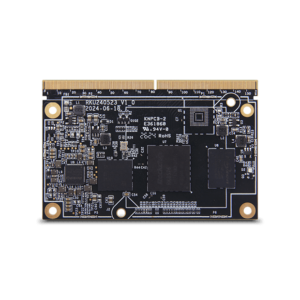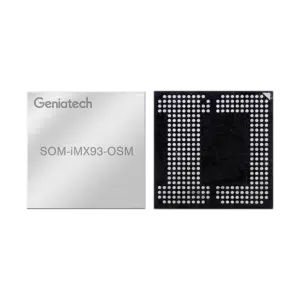Exploring the Benefits of Using Computer on Modules in Industrial Applications
Exploring the Benefits of Using Computer on Modules in Industrial Applications
Blog Article
The rapid growth of engineering has pushed substantial inventions in embedded methods, certainly one of which will be the system on module arm Acting as a bridge between custom electronics and off-the-shelf segments, the SoM is redefining how developers approach embedded system design. This website highlights the primary knowledge of a Program on Component and their rising applications in several industries.

What's a Process on Component (SoM)?
A Program on Component (SoM) is a lightweight, ready-to-use panel that combines all of the key aspects of a system about the same module. That on average contains the processor, memory, energy administration units, and often extra peripherals like Wi-Fi or Ethernet. Unlike a conventional single-board computer, an SoM does not include fittings and program ports pre-installed, meaning it must be coupled with a provider table to make a complete system.
Made to streamline growth workflows, the modular nature of an SoM allows developers to miss out the intricate procedure for designing and building each individual portion from scratch. By adopting an SoM, organizations can concentrate more on the application-specific characteristics of their products.
Features of Using Process on Element
The integration of an entire system on one module gifts many benefits. First, it dramatically reduces enough time necessary for solution development. Pre-tested adventures guarantee balance, preserving months of work for engineering teams.
Furthermore, the scalability of an SoM allows businesses to modify efficiency degrees predicated on project requirements. Like, a low-cost answer can very quickly degree into a high-end solution by swapping the model in the element while keeping the company board design. This method decreases executive risks while marketing long-term cost-efficiency.
Last but most certainly not least, the consistency of an off-the-shelf component ensures large compatibility with present resources and frameworks, making it perfect for equally small startups and big enterprises seeking to hit the industry quickly.
Key Purposes of SoM in Embedded Systems
The use of Process on Modules spans many high-demand industries including however, not limited by medical products, automation, and consumer electronics.
Medical Devices
Accuracy and consistency are paramount in healthcare. System on Modules with secure processing capabilities are embedded in monitors, imaging devices, and lightweight diagnostic tools.
Professional Automation
Robust and energy-efficient, an SoM is essential for professional get a grip on programs and autonomous robotics. Their scalable architecture helps high-speed data processing and IoT connectivity.
IoT Units

Customer products like wise thermostats, wearable products, and even house assistants incorporate an ultra-compact System on Component for easy performance.
The Process on Component continues to achieve traction due to its paid down complexity and usefulness, cementing itself as a future-proof solution in the embedded techniques sphere. Market leaders already are leveraging these segments, and their scope is expected to expand even further as technology evolves.
Report this page